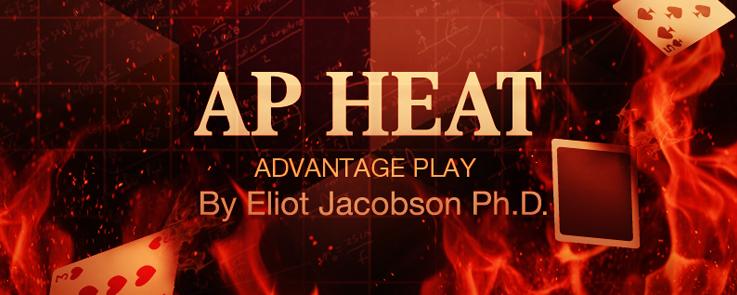Ultimate Texas Hold'em Hole-Card Play: Two Dealer Cards

Ultimate Texas Hold'em (UTH) must surely be the most widely available and profitable opportunity for hole-card play right now. Over the last few months, I finally took this challenging game to task and wrote a series of articles about various hole-carding situations the player might encounter. I thought I had covered it all until an AP recently contacted me and asked about the edge he could get if he could see both dealer hole-cards before acting.
Wow! Is this stuff for real? Are there really dealers out there exposing both of their hole-cards at UTH?
At any rate, this project was not tough at all. I quickly modified my UTH code and set it loose. After it was done and I was double checking the results, I noticed that my code double counted each hand. In practice that means that the results are correct, but the cycle could have completed in half the time.
Here is the spreadsheet that gives the output produced by my program:
Here is a summary of the results from using computer-perfect play to hole-card UTH when the AP knows both dealer hole-cards:
-
The player edge in UTH knowing both dealer hole-cards is 38.5816%.
-
The player makes a 4x pre-Flop raise on 34.7368% of his hands.
-
The player checks pre-Flop on 65.2632% of his hands.
Computer-perfect play isn't feasible for our species on this planet at this moment in human evolution. Fortunately for the AP (or unfortunately for the casino), the world's easiest strategy performs remarkably well.
Here it is, the world's easiest strategy for playing UTH when both dealer hole-cards are known:
-
Raise 4x if you are ahead pre-flop. Otherwise,
-
Raise 2x if your five-card poker hand outranks the dealer's five-card poker hand post-flop. Draws do not count in this ranking. It is just straight comparison of poker hands. Otherwise,
-
Raise 1x if your best five-card poker hand ties or beats the dealer's best five-card poker hand after all 5 community cards are dealt. Otherwise,
-
Fold.
The only subtlety to this strategy comes when comparing pre-flop hands. First, pairs outrank non-pairs. Otherwise, the top card of the two-card hand is used to compare the hands. If the top cards tie, then the lower card is used to compare the hands. If the two hands are tied, then the player having a suited hand is used as a tie-breaker.
Here are some pre-flop examples:
-
Raise 4x if you hold a pair of 5's and the dealer holds a pair of 4's or less. Check if you hold a pair of 5's and the dealer holds a pair of 5's or better.
-
Raise 4x if you hold 7-5 unsuited and the dealer holds 7-4 or worse (suited/unsuited for the dealer doesn't matter).
-
Check if you hold 7-5 unsuited and the dealer holds 7-5 or better (suited/unsuited for the dealer doesn't matter).
-
Raise 4x if you hold 7-5 suited and the dealer holds 7-5 unsuited.
I programmed this strategy into a Monte-Carlo simulation and let it run for one billion hands. The results are:
-
If the player knows both dealer hole-cards, then the world's easiest strategy gives the player a 34.254% edge over the house.
It is worth noting that there are examples where the pre-flop strategy given above does not match computer-perfect play. If the player's starting hand is 7c,5c and the dealer's starting hand is 6d,4d then:
-
EV "Check" = 0.721132.
-
EV "Raise 4x" = 0.721025
-
Computer perfect strategy is to check 7c,5c against 6d,4d.
Likewise, using computer-perfect play, the player should check with:
-
6c,4c against 5d,3d
-
5c,3c against 4d,2d
On the other hand, if the player holds 8c,6c against the dealer's 7d,5d then correct strategy is to raise 4x.
Don't ask me why. I don't know.
If you are an AP who is lucky enough to find this opportunity and you never had previously considered how you might play, you would most likely have used exactly this strategy. Intuitively, there are going to be improvements post-flop with flush draws, and possibly open-ended straight draws. But, is it really worth it to figure those out? I mean, 34.254%, really, isn't that enough?
As for the casino side. If you have a dealer who is exposing both hole-cards, then you have bigger problems than incompetent dealers.


